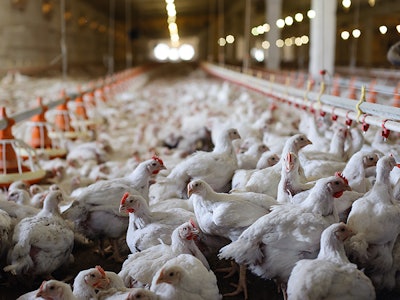
There is little variation in the average air pollution levels of regions with a high density of poultry farms compared to urban areas on the Eastern Shore of Maryland, revealed preliminary data from the Lower Eastern Shore Air Monitoring Project.
“The nearly 30 months of data recorded and published by the Lower Eastern Shore Air Monitoring Project are valuable to researchers and the public,” said Holly Porter, Delmarva Chicken Association’s (DCA) executive director.
“We in the chicken community have a shared interest with all Marylanders in better understanding what air quality is truly like on the Eastern Shore and elsewhere in the state.”
The Maryland Department of the Environment (MDE) oversaw the project, with support from the DCA and the Keith Campbell Foundation for the Environment. The partnership was first announced in 2019, when the two groups pledged $500,000 to the effort.
Ammonia and other air emissions in Maryland
Beginning in April 2020, the University of Maryland Eastern Shore collected and monitored data about ammonia, fine particulate matter and coarse particulate matter from three specific regions in Maryland.
Two of the areas located on the Eastern Shore – Princess Anne and Pocomoke City – were designated a low poultry operation density site and a high poultry operation site, respectively. The third is an urban Maryland location with no poultry operations nearby.
The results showed that ammonia levels at the urban site were 1.6% of the MDE-designated threshold, higher than the 1.3% threshold level in the Princess Anne (low poultry density). This percentage was only slightly lower than the 2.9% threshold found in Pocomoke City (high poultry density).
In addition, the Pocomoke City site had lower maximum hourly values for each pollutant than the Princess Anne site, which had a lower density of poultry operations. The report attributed spikes in the maximum hourly values for pollutants at the Princess Anne site to times when commercial fertilizer was applied to croplands nearby.


















